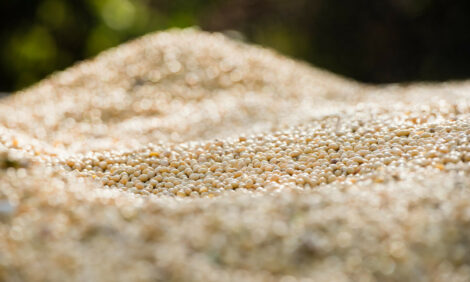



Tariffs, tech spending cloud US farm outlook - CoBank
Rate cuts offer limited relief for ag sector
Significant downward revisions to monthly payroll estimates in August led many market observers to anticipate the Federal Reserve would begin cutting interest rate cuts more aggressively. However, recent economic data has generally been positive, tempering expectations for more significant cuts before the end of the year, according to a recent market report from CoBank.
According to a new quarterly report from CoBank’s Knowledge Exchange, the most likely scenario is an additional four or five cuts of 25 basis points through 2026, leaving the overnight rate around 3.0% by the end of 2026. The actual outcome will depend heavily on how the economic data looks and how successful the White House is in influencing monetary policy.
Tariff policy uncertainty, the sharp decline in immigration and the massive surge in AI investments have made interpreting traditional economic reports more difficult. The CoBank report suggests sharp swings in monthly import volumes, a flattening of working-age population growth and a soaring stock market make it difficult to gauge how “Main Street” America is doing economically.
“The intense politicisation of attitudes has rendered longstanding public sentiment surveys erratic and unhelpful in gauging actual economic conditions,” said Rob Fox, vice president of CoBank’s Knowledge Exchange. “The federal government shutdown and potential loss of scheduled economic reports will make it even more difficult for businesses to gauge the economy and make prudent business decisions.”
Despite rising fears that the rapid adoption of AI will soften the labour market and dim job prospects for college graduates, Fox said there is little evidence to support those fears.
“New technologies have always raised concerns about job losses," he said. "The recurring theme is job transformation, not elimination. This time isn’t any different. Today’s college graduates are already deeply familiar with AI and are using it to sharpen skills hiring managers value most."
Dollar sales of retail ground beef grew by double digits in August, up 13% year-over-year at $1.7 billion, according to Circana. While beef prices remain elevated on tight cattle supplies, persistent demand boosted overall sales, and volume kept pace. Domestic cattle prices rose throughout much of the third quarter, setting new records and boosting returns to ranchers, but complicating beef market dynamics otherwise. Beef packer margins struggled during the third quarter. Despite strong demand for beef, several factors are limiting production growth.
A slimming US hog herd served to lift market prices. Price rallies for lean hog futures and feeder pigs persisted over the summer, settling at 20% and 48% higher year-over-year, respectively, in late September.
In August, farrow-to-finish profit margins reached $52.58 per head, the highest since June 2021, according to Iowa State University. Pork producers have now posted profits for 17 consecutive months.
Export demand has slowed slightly compared to 2024, which was a record export year for US pork. Mexico remains the largest buyer of US pork.
With beef prices hitting all-time highs, the US broiler segment capitalised on the opportunity to provide consumers a value offering this summer. A strong focus on chicken at retail and foodservice boosted white meat values through August. The quick-service restaurant segment featured a multitude of chicken options focused on strips and new flavors. Softening white meat values during the remainder of the year are likely to crimp margins but will continue to position chicken as a competitive value offering in 2026. Broiler production is expected to remain elevated through the end of 2025.
US dairy farmers continue to enhance their revenue by producing calves destined for beef production. Beef’s contribution to the bottom line has moved from $1 to $4 per cwt. over the past four years. The US dairy herd has climbed to its highest level in over 30 years, in part, to capitalise on revenue from beef-on-dairy calves. While milk production margins had been somewhat favourable, strong output in recent months significantly changed the price forecasts. Butterfat production is in overdrive and ample supplies have sent milk futures lower. Typically, that would prompt dairies to reduce production. But the combination of the lowest feed prices in five years and profit margins for beef may be a stronger signal.



